Table of Content
History of Khufu Pyramid
Strategic Location of Khufu's Pyramid
Facts about the Khufu Pyramid
The Reign and Legacy of King Khufu
The Construction of the Great Pyramid of Giza
Interior of the Great Pyramid
Mysterious facts about the Pyramid
The Giza Pyramid Complex: A Nexus of History and Mystery
The Great Pyramid
The Great Pyramid of Khufu, also known as the Pyramid of Cheops, stands as a marvel of ancient engineering and the most iconic structure among the Giza pyramids. Built during the Fourth Dynasty, it is the largest of the three pyramids and one of the Seven Wonders of the Ancient World. This monumental structure has fascinated historians, archaeologists, and tourists alike for centuries.
This article's primary purpose is to offer every traveler and scholar all the information and details about the Great Pyramid of Khufu. It is written by a knowledgeable team of Egyptologists, tour guides, and tour operators who have extensive knowledge about the legendary Pyramid of Giza.
The Pyramid of Giza is an accurate representation of the social structure of the ancient Egyptian community and held significant religious importance as it was a replica of the ancient mound where the creator, God Amun created the universe. This true mystery continues to capture the minds of everyone, from tourists to archaeologists and scientists, making it a timeless marvel that epitomizes the grandeur of ancient Egypt.
To fully experience the grandeur of the Giza plateau, including the iconic Pyramids, the Sphinx, and the Valley Temple, join Sun Pyramids Tours on an unforgettable journey. Explore our Giza Pyramids, Sphinx, and Valley Temple itinerary, and delve into the rich history and mysteries of ancient Egypt with our expert guides.
History of Khufu Pyramid
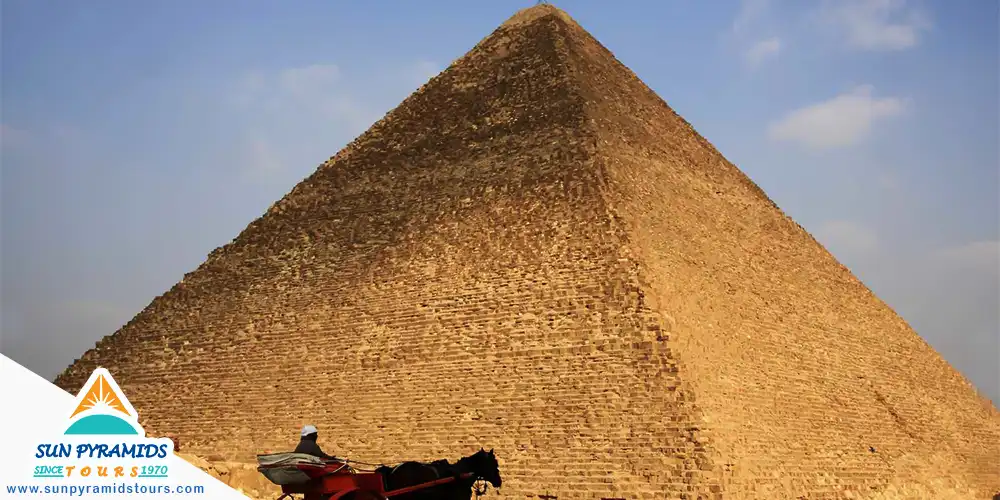
The official narrative suggests that the Great Pyramid was built as a tomb for Pharaoh Khufu (Cheops), who ruled Egypt during the Fourth Dynasty around 2580–2560 BC. The Pyramid's construction remains a topic of debate, with various theories attempting to explain how the ancient Egyptians managed such an extraordinary feat. Despite extensive studies, the exact methods used to construct the Pyramid are still not definitively known, adding to its enduring mystery.
The Legacy of Khufu's Pyramid:
The Pyramid was built by Pharaoh Khufu during the Old Kingdom (2686-2181 BC), specifically around 2560 BC. Known to the Greeks as the Pyramid of Cheops, it is the first of the three pyramids constructed during the Old Kingdom. The ancient ruins of the Memphis area, including the Pyramids of Giza, Saqqara, Dahshur, Abu Rawash, and Abu Sir, were collectively designated a UNESCO World Heritage site in 1979.
Planning and Site Selection:
Khufu began planning his Pyramid after ascending to the throne, choosing Giza for his necropolis due to its strategic location and the absence of competing monuments. His mother, Hetepheres I, was also buried nearby. Dating the Great Pyramid of Khufu has involved historical chronology and radiocarbon dating, pinpointing its construction to roughly between 2700 and 2500 BC.
Historical Documentation:
Many prominent historians have documented the Great Pyramid of Khufu. The ancient Greek historian Herodotus provided detailed accounts in the 5th century BC. Diodorus Siculus visited Egypt between 60 and 56 BC and described the history, land, customs, and monuments, including the Great Pyramid. Greek geographer, historian, and philosopher Strabo visited Egypt in 25 BC and noted the pyramids as royal tombs. Roman writer Pliny the Elder wrote about the Pyramid during the first century AD, attempting to understand its construction.
Islamic and Modern-Era Studies:
Numerous scholars documented the Pyramid during the Greek and Coptic eras. In 820 AD, Abbasid Caliph Al-Ma'mun tunneled into the structure, discovering the ascending passage and its connecting chambers. Islamic historians like Al-Maqrizi and Arab polymath Abd al-Latif al-Baghdadi extensively studied the Pyramid. During the Battle of the Pyramids in 1798, Napoleon Bonaparte and his French troops captured Cairo and explored the Great Pyramid of Khufu.
Strategic Location of Khufu's Pyramid
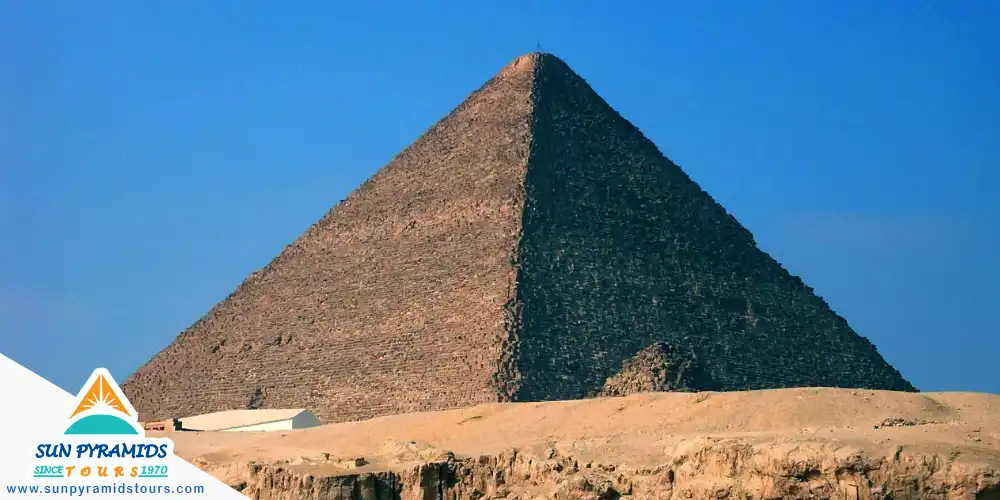
The Great Pyramid of Khufu is situated on the Giza Plateau, on the outskirts of Cairo, Egypt. This strategic location on the western side of the Nile River was chosen because ancient Egyptians believed the West was associated with the realm of the dead. The Giza Plateau is home to not only the Great Pyramid but also the pyramids of Khafre and Menkaure and the iconic Great Sphinx, creating a historic and cultural complex that draws millions of visitors each year.
The pyramid of King Khufu stands precisely at the intersection of the longest lines of latitude and longitude, at coordinates 29°58′45″N 31°08′03″E. This location was meticulously selected to align with significant celestial and geographical markers. South of the Great Pyramid, near Khafre's valley temple, lies the enigmatic Great Sphinx, further enhancing the site's allure and mystery.
Explore the incredible Giza Plateau with Sun Pyramids Tours and immerse yourself in the rich history and grandeur of ancient Egypt. Book your Giza Plateau itinerary today for an unforgettable journey through time.
Facts about the Khufu Pyramid
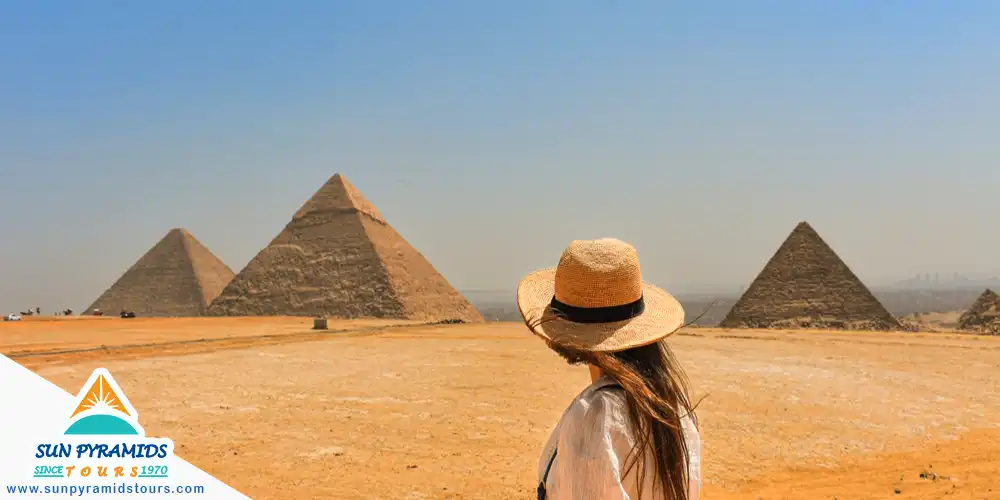
-
Ancient Name: "Akhet Khufu" means Khufu's Horizon.
-
Original Height: 146.6 meters (481 feet).
-
Current Height: 138.8 meters (455 feet) due to erosion and loss of casing stones.
-
Historical Significance: Oldest and most unchanged of the Seven Wonders of the Ancient World. Held the title of the tallest man-made structure for over 3,800 years until surpassed by Lincoln Cathedral in England in 1311 AD, and later the Eiffel Tower in Paris in 1889 AD.
-
Construction Period: Took 20 years to build under the direction of Khufu's vizier, Heminuu.
-
Building Materials: Approximately 2.3 million blocks of limestone, each weighing around 2.5 tons, totaling about 5.9 million tons.
-
Base Dimensions: 230.3 meters (756 feet) on each side.
-
Slope Angle: 51°50'40".
-
Alignment: Precisely aligned with the four cardinal points.
-
Interior: Contains three known chambers and the Grand Gallery, leading to the King's Chamber.
-
Engineering Precision: Exemplifies advanced ancient Egyptian engineering skills with nearly perfect alignment and construction.

The Reign and Legacy of King Khufu
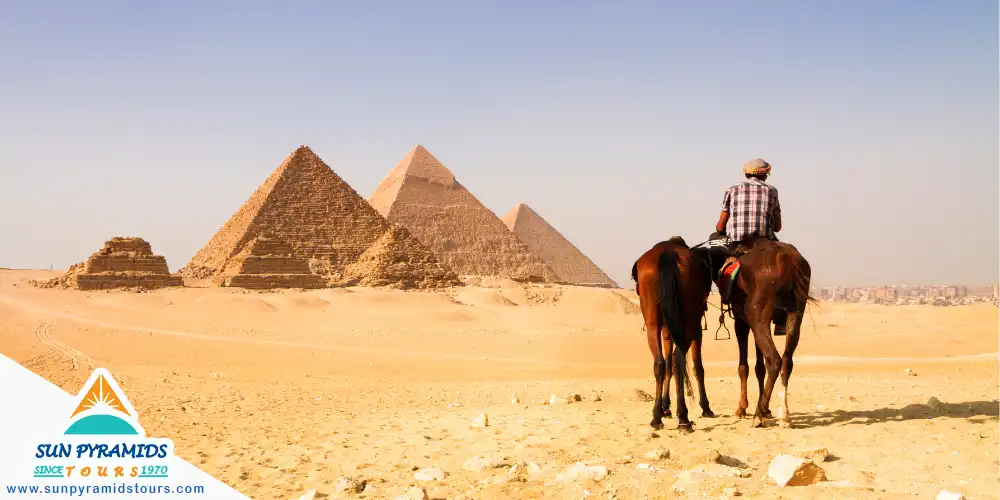
Pharaoh Khufu, also known by his Greek name, Cheops, was the second pharaoh of the Fourth Dynasty. His original name was Khnum-Khufu. He succeeded his father, Sneferu, and was crowned in the 26th century B.C. The exact duration of his reign is uncertain, with ancient Egyptian and Greek historians suggesting he ruled for 50 or 63 years, while modern scholars estimate a reign between 23 and 46 years.
Despite the lack of knowledge and mystery surrounding his reign, Khufu's legacy is immortalized through the construction of The Great Pyramid of Khufu in the Giza necropolis.
Khufu is often depicted as a stern ruler, and his Pyramid stands as a monumental testament to his power and ambition. The only completely preserved statue of the pharaoh is a three-inch high ivory figurine found in Abydos in 1903, which is now displayed in the Grand Egyptian Museum. Interestingly, the mummified body of King Cheops, or Khufu, has never been found, as it was likely stolen from the Great Pyramid at some point in history.
The Great Pyramid of Khufu remains a symbol of his reign, showcasing the advanced engineering and architectural skills of ancient Egypt. Khufu's ambitious construction projects and the grandeur of his Pyramid continue to fascinate historians, archaeologists, and tourists, preserving his memory through one of the most iconic structures in human history.
The Construction of the Great Pyramid of Giza
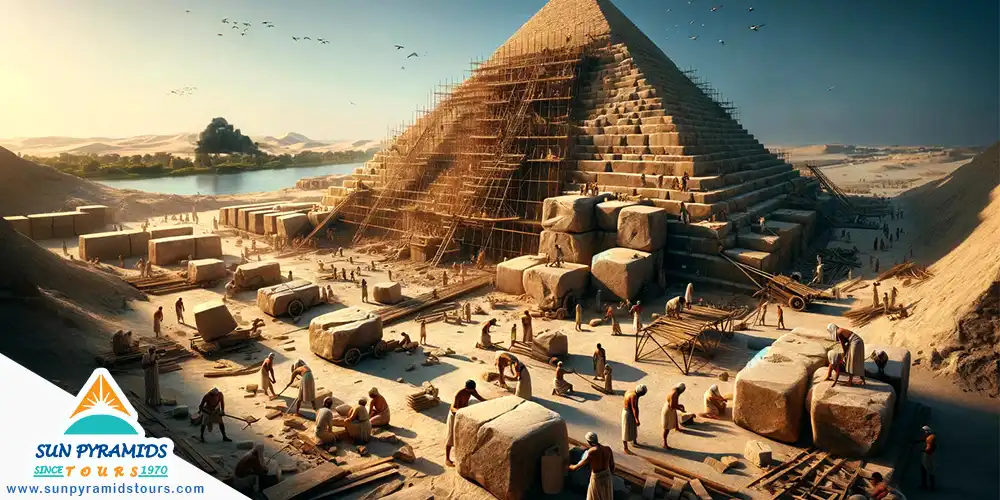
The construction of the Great Pyramid of Giza is one of the most debated topics among historians and archaeologists. Traditional theories suggest it was built using a large workforce over 20 years. Unlike earlier theories that suggested slave labor, it is now understood that the Pyramid required an organized, skilled workforce, peaking at approximately 100,000 laborers working in rotating shifts. The workforce was meticulously organized into teams with a clear hierarchy, ensuring efficiency and precision.
Approximately 5.5 million tonnes of limestone, 8,000 tonnes of granite, and 500,000 tonnes of mortar were used in the construction. White limestone from Tura was used for the casing, while massive granite blocks from Aswan, weighing up to 80 tonnes, were used for the King's Chamber.
The Pyramid was initially covered in smooth white limestone, which has since been removed over the centuries to build fortresses and mosques in Cairo. Upon completion, a capstone made of a shiny material like gold or electrum was placed on top, enhancing its heavenly appearance.
The exact methods remain a topic of fascination and speculation, adding to the enduring mystery of The Construction of the Great Pyramid of Giza.
Interior of the Great Pyramid
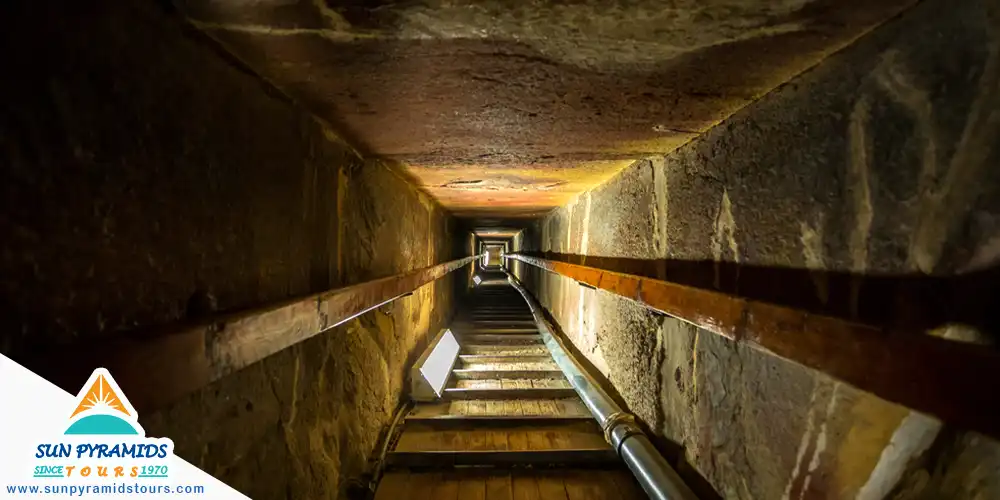
Due to its complexity and precision, the interior of the Great Pyramid has been the subject of many fringe theories and extensive studies. It comprises several notable chambers and passages, each contributing to the Pyramid's mystique. Among these are the King's Chamber, the Queen's Chamber, the Grand Gallery, and a series of smaller structures and corridors.
The King's Chamber:
Located at the heart of the Pyramid, the King's Chamber is made entirely of granite. This Chamber houses a rectangular granite sarcophagus, which measures about 198 cm (6.50 ft) by 68 cm (2.23 ft) internally and 228 cm (7.48 ft) by 98 cm (3.22 ft) externally, with a height of 105 cm (3.44 ft) and a thickness of about 15 cm (0.49 ft). The Chamber is surrounded by five relieving chambers designed to absorb the immense pressure from above, redirecting it into the surrounding stones. Two narrow shafts in the north and south walls are believed to be aligned with specific stars or areas of the sky, facilitating the ascent of the King's spirit to the heavens.
The Queen's Chamber:
The Queen's Chamber is another significant part of the Pyramid's interior, believed to have been intended for the pharaoh's wife. It mirrors the design of the King's Chamber but features unique elements. The Chamber's purpose remains partly speculative, with some theories suggesting it may have been a symbolic structure rather than an actual burial chamber.
The Grand Gallery:
The Grand Gallery is a passage leading to the royal burial chambers, standing 8.6 meters (28 ft) high and 46.68 meters (153.1 ft) long. This gallery is a testament to ancient stonemasonry, featuring a corbelled vault at an angle of about 26 degrees. The walls are lined with massive granite blocks, showcasing the architectural prowess of the ancient Egyptians.
Additional Chambers and Passages:
In addition to these primary structures, the Great Pyramid contains an unfinished subterranean chamber of enigmatic purpose, several "air shafts" radiating from the upper chambers, and smaller satellite pyramids and buried solar barges within the complex. These features add to the intrigue and complexity of the Interior of the Great Pyramid.
Despite extensive study and exploration, the methods used to construct these intricate internal features remain a topic of fascination and speculation, further enhancing the Great Pyramid's enduring mystery.
For a more immersive experience, consider visiting the Giza plateau with Sun Pyramids Tours. Explore these remarkable interiors and discover the secrets of the ancient world first through this Cairo day tour comprehensive itinerary.
Mysterious facts about the Pyramid
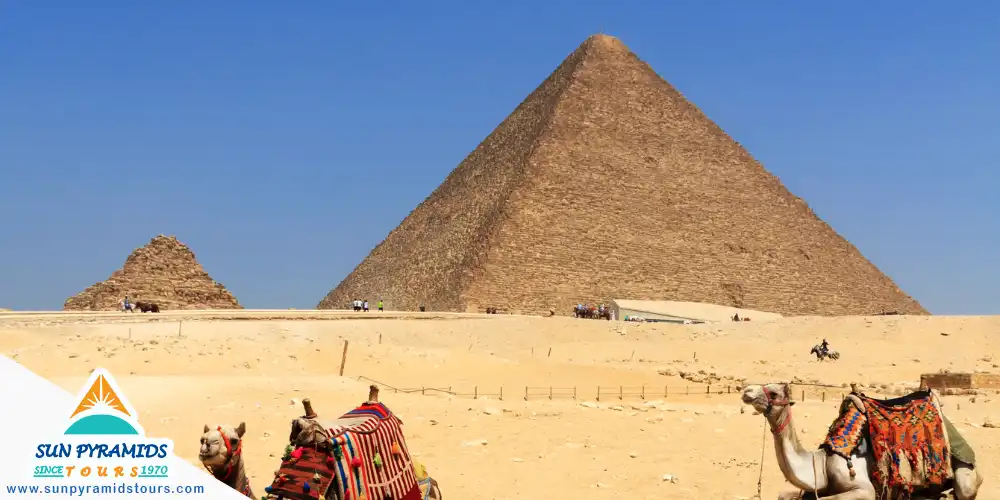
Numerous mysteries and theories surround the Great Pyramid. For centuries, researchers have been intrigued by questions about how the massive stones were transported and placed, the purpose of the complex internal passages, and the Pyramid's alignment with celestial bodies.
Some alternative theories even suggest connections to lost civilizations, ancient power plants, or extraterrestrial involvement. These mysteries continue to captivate our imagination and fuel ongoing research and exploration.
The Giza Pyramid Complex: A Nexus of History and Mystery
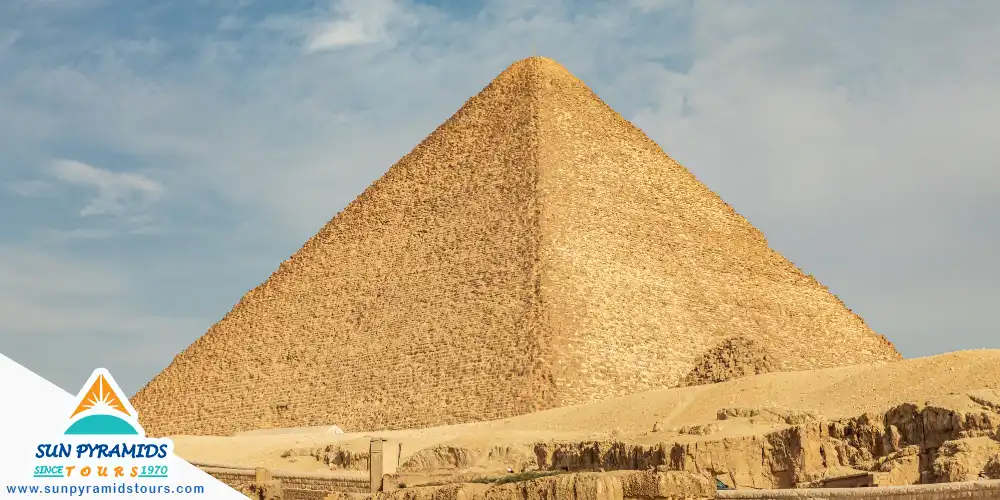
The Giza Pyramid Complex stands as a nexus of history and mystery, drawing countless visitors and scholars intrigued by its grandeur and enigma. From the towering Great Pyramid of Khufu to the enigmatic Sphinx, the site embodies the pinnacle of ancient Egyptian architectural achievement. As we continue to study and explore these ancient structures, we uncover more about the civilization that built them while also realizing how much remains to be discovered.
With Sun Pyramids Tours, every visit to the Giza Pyramid Complex offers a journey through time, allowing you to experience firsthand the majesty and mystery of Egypt's most iconic monuments. Book your tour today and delve into the wonders of the Giza Plateau.
Why do I book with Sun Pyramids Tours?
- Expertise and Experience: Sun Pyramids Tours has a wealth of 53 years of experience in the travel and tourism industry.
- Customized Itineraries: Sun Pyramids Tours offers tailored itineraries to suit your preferences. Whether you're interested in historical sites, cultural immersion, or adventure activities, we can design a tour that matches your interests.
- Local Connections and Insider Access: Sun Pyramids Tours can provide you with unique opportunities and insider access to attractions and experiences that may not be easily accessible to independent travelers.
- Hassle-Free Planning: Sun Pyramids Tours can take the stress out of planning your trip. We handle all the logistics, including accommodations, transportation, and guided tours, at competitive prices… Relax and enjoy your vacation without worrying about the details.
- Customer Satisfaction: Sun Pyramids Tours prides itself on providing excellent customer service and ensuring customer satisfaction. They strive to meet and exceed your expectations, making your trip enjoyable and memorable. Add trip advisor reviews, Facebook page reviews, etc.
- Safety and Security: Sun Pyramids Tours prioritizes the safety and security of their guests. We work with trusted partners, adhere to safety guidelines, and provide support throughout your journey to ensure a safe and comfortable travel experience.
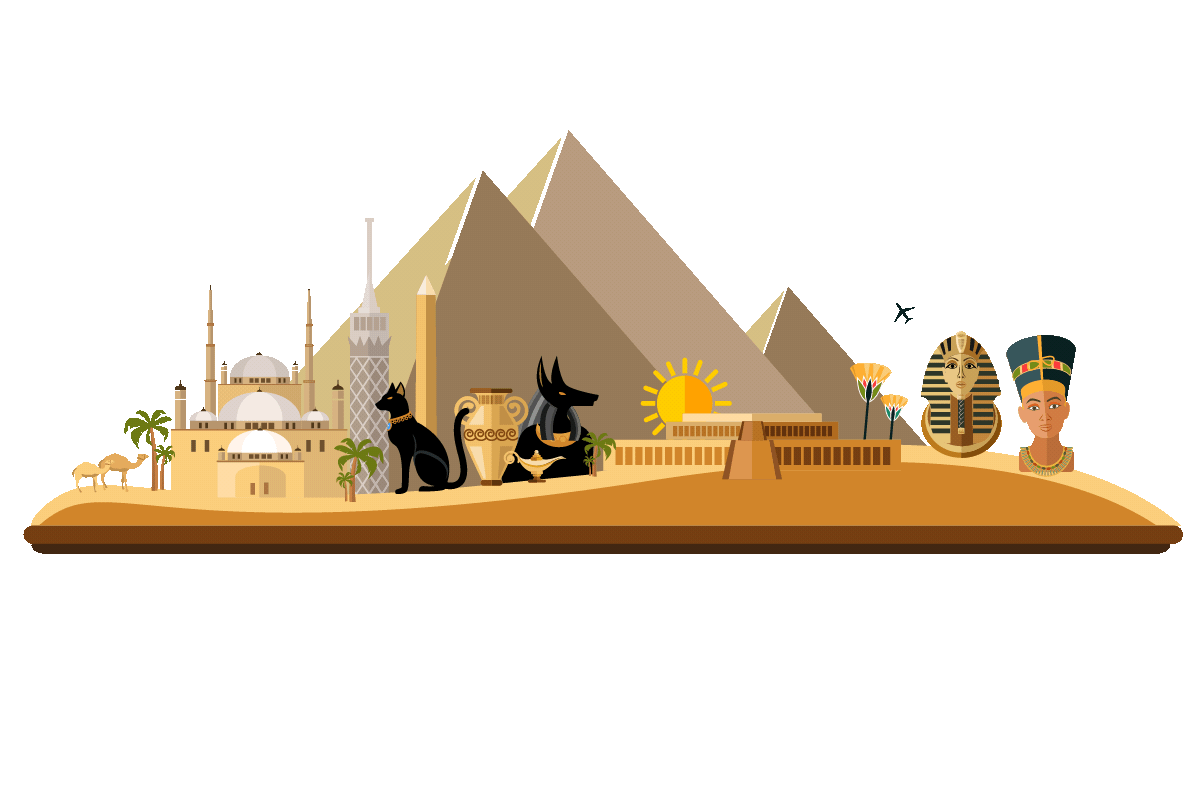
.DvizhAGb.gif)
Plan your next adventure now
Related Tours
Frequently Asked Questions
See more

There are no frequently asked questions :)
Related Blogs

Plan A Trip to Egypt
+1 more
Ultimate Guide: How To Plan A Trip To Egypt

Christmas and New Year in Egypt
+1 more
Christmas and New Year in Egypt

Egypt Hidden Gems
+1 more
Egypt Hidden Gems

Abu Simbel Temple
+1 more
Abu Simbel Temple
Need help to Finding your Trip?
Offers
Make Trip
trips
Home


